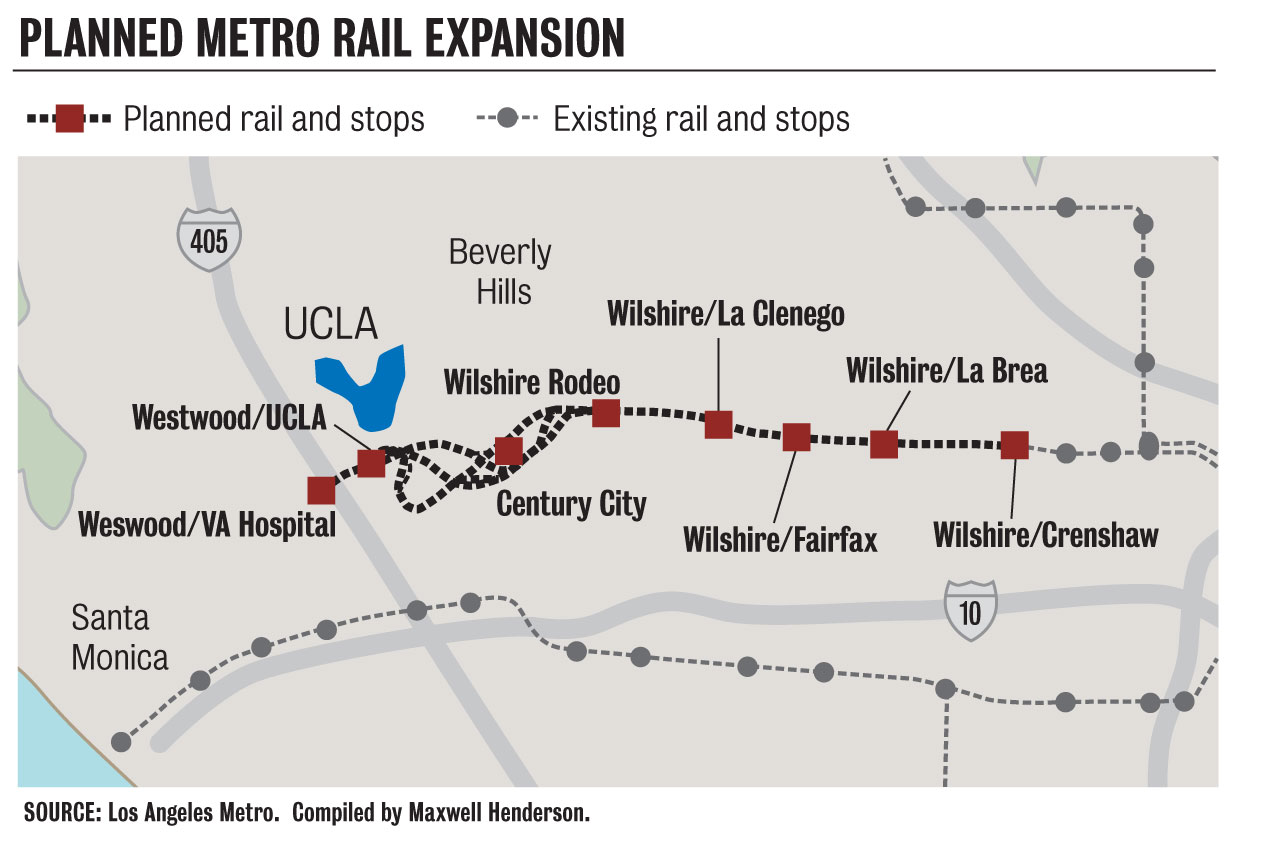Following the approval of budget and construction plans by the Metro Board and Federal Transit Administration, Westwood and UCLA will be one step closer to harboring a heavy rail subway stop beneath the bustling streets.
On June 28, Metro held a community update meeting at the Westwood United Methodist Church to provide community members with their most recent project developments since a November 2008 vote approved Measure R.
The measure allocated $4.2 billion to extend the existing subway system to the Westside of Los Angeles ““ an area of significant traffic congestion. More than 425,000 people pass through the Westside daily.
During a live-streaming online broadcast of the meeting, Jody Litvak, Metro operations community relations manager, said they are working towards selecting one of the five Locally Preferred Alternatives, which were developed with the help of public input and can be funded with the current budget and completed within a reasonable amount of time.
While only two alternatives are currently within the allotted funding, all five construction plans contain a Westwood/UCLA stop ““ the exact location of which has yet to be decided.
According to Litvak, Metro decided upon heavy rail transportation because it is a robust technology that can move a significantly large amount of people.
“There have been discussions about what to do about Wilshire Boulevard going back 100 years, and attempts to bring a rail system for about 50 years,” Litvak said.
“We finally have the committed funding source, public support and political support we need.”
However, with all the support the project has gained thus far, the project still has a few hurdles to surpass in order to earn federal funding, including meeting the Federal Transit Administration’s New Starts Evaluation Criteria.
New Starts is a federal competitive grant program that evaluates the project in areas such as cost effectiveness, equity, feasibility and environmental considerations, said Dave Mieger, director of Westside planning.
Litvak said it is expected that by this fall, the Metro board will adopt a locally preferred alternative and finalize the Environmental Impact Statement, a document detailing the effects of the the rail system on the surrounding area, which will be submitted to the Federal Transit Administration for approval.
She added that during the summer, Metro will release a draft of the Environmental Impact Statement to the public.
Since a Westwood/UCLA stop is included in all five project alternatives, no matter which is chosen, new access to the UCLA campus will be created.
“The arrival of the subway will change the area like nothing has since the construction of the 405 interstate,” said David Karwaski, planning and policy manager for UCLA Transportation.
“The level of access will increase tremendously as well. UCLA will now become an option to (potential students) who hadn’t previously considered it one.”
Matthew Kroneberger, who is president of Bruins for Traffic Relief, said for the many students, faculty and staff who do not live near UCLA, the subway will foster better, healthier lives by easing the ability to commute to the university.
For the students already attending UCLA, the subway will allow them to connect with the community in an area not ridden with traffic, Kroneberger said, adding that the only way for students to experience the culture around them is if they have the means to access it.
Metro has been working closely with UCLA administration and will continue to do so, particularly if it chooses to locate a station on UCLA property, Kroneberger said.
Following approval of the finalized Environmental Impact Statement, construction may begin 18 months from now, Litvak said.
According to the current plan, construction of the subway would be carried out in phases and is scheduled to reach UCLA by 2036.
